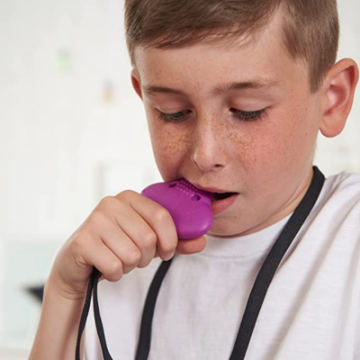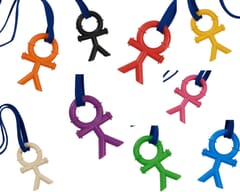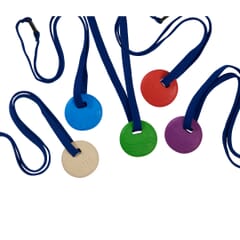Get exclusive deals you won't find anywhere else straight to your inbox.

Why Do Children On The Autism Spectrum Chew?
Why Do Autistic Children Like To Chew?
Many children (and adults) on the Autism Spectrum chew or bite on non-edible objects such as toys or pencils. They may also like to suck shirt sleeves or bite jumpers. This is a form of “Stimming” which is short for self stimulatory behaviour.
Chewing is just one form of stimming. Others can be hand flapping, rocking or spinning. These are often done to relieve anxiety, reduce fear and combat sensory overload.
Most people stim to some degree – nail biting, hair twirling and foot tapping are all stimming behaviours – but for those with Autism their stimming tends to be more extreme and more frequent impairing their ability to interact with other people and participate in ordinary activities.
A child in a classroom who is constantly stimming by flapping or pacing up and down will not only find it difficult to take part but will also be a distraction to others.
Chewing non-edible objects one of the more manageable forms of stimming and has little impact on others. The main issue is what to chew or bite safely without risk of choking or poisoning.
Sucking and biting jumpers and shirts is less dangerous but does lead to dirty sweaters and soggy cuffs!
There are some who advocate discouraging stimming on the grounds that it is often inappropriate. Another view is that, as long as it is safe and does not impact on others, stimming is a useful outlet, reducing anxiety and allowing the autistic person to handle situations they find difficult or stressful.
There are various strategies and tools to modify chewing and biting. Chewy foods such as carrots and celery sticks can be used as a temporary chew. Specially designed chewy toys such as the Chewbuddy (made from medical grade material) also provide a safe alternative to chewing on fingers, cuffs, pencils and toys.





